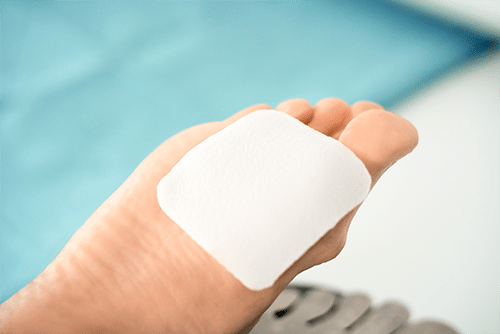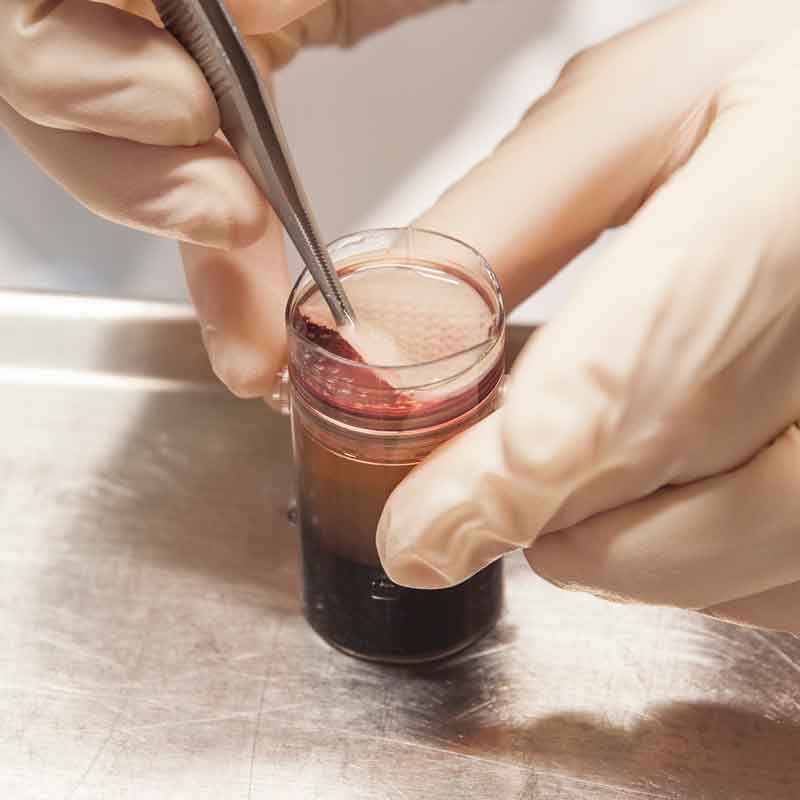“Working with 3C Patch® was exciting and energized the team and the patients in what would otherwise be resigned scenarios. It was technically different from all other treatments we have used before, and patients understood a logic model behind the treatment. The concept of their own blood being used to form a patch full of active cells, which helps heal their wound, helped with buy-in and compliance. “
Nikki Drake and Nicola Percy
Advanced Podiatry Practitioners
We asked Nikki Drake and Nicola Percy, Advanced Podiatry Practitioners for diabetes at North Bristol NHS Trust, to share with us their experience with managing hard-to-heal wounds associated with diabetes. They both have a combined experience of 39 years working within the secondary care services.
WHAT IS YOUR ROLE IN THE DIABETES FOOT CLINIC?
Our role involves a full assessment of new patients, focused on:
- arterial assessment
- mechanical factors
- wound assessment
- development of treatment plans
- sepsis assesment
CAN YOU TELL US ABOUT THE PATIENTS YOU SEE?
We see approximately 88 patients/week as a team.
We accept all referrals for patients with diabetes mellitus (DM), foot tissue loss, unexplained pain, redness, or swelling.
We prioritize care to be shared with community services, collaborating as a multidisciplinary team (nursing, tissue viability nurses, podiatrists, and the hospital staff). Our main responsibility is to identify those most at risk needing urgent revascularization, complex wound care, and offloading. The patients who are most at risk of limb loss will be offered regular follow-ups in our clinics.

HOW MANY OF THE WOUNDS YOU SEE HEAL BY USING JUST STANDARD OF CARE ALONE?
On average, if we consider a period of 12 weeks of referrals received, approximately 60% of our patients heal with conventional treatment alone. This means that for approximately 35 patients/week, we need to use additional therapies to manage their wounds..
IN YOUR EXPERIENCE, WHAT HAS CHANGED REGARDING THE TREATMENT STANDARDS FOR DIABETES FOOT ULCERS?
There are a lot of factors to consider when talking about diabetic foot ulcers, such as: disease etiology and evolution, lifestyle, access to medical services, etc.
In terms of disease etiology and evolution, we have noticed an increase in the complexity of wounds and health status, as well as an increase in comorbidities and frailty. On the one hand, more patients present with distal vessel disease associated with diabetes mellitus, but on the other hand, there are fewer cases of major vessel disease. A potential explanation for the latter being a decrease in smoking.
We also see more patients that have undergone a renal transplant, more patients with Charcot foot, and mechanical foot issues.
In terms of lifestyle factors, we are seeing more younger patients who develop type 2 diabetes, as well as more patients who struggle with being overweight. In addition to this, we are seeing poorer control of diabetes and later diagnosis that leads to end-stage complications faster.
Furthermore, cutbacks in services have had an impact on community Podiatry availability, making access to preventative care more challenging for patients.
On the positive side, the spur in clinical data and research activity has increased the knowledge database, as well as leading to more engagement, and associated specialism within the multidisciplinary diabetes teams.
WHAT TREATMENTS ARE YOU CURRENTLY USING TO MANAGE HARD-TO-HEAL DIABETIC FOOT ULCERS?
We use some advanced dressings that are NICE approved, which clinicians find it easier to use and in multiple settings. We use negative pressure, which has proven very helpful in acute wounds, but we do not use it routinely in chronic wounds, and we use 3C Patch® on the very difficult to heal wounds.

WHAT TYPES OF FOOT ULCERS DO YOU CONSIDER FOR TREATMENT WITH 3C PATCH®?
All types of complex diabetes mellitus foot ulceration can be a candidate for using 3C Patch®. In addition, we consider the wounds that failed to respond to our standard of care or those wounds that are evaluated as having no other option than amputation.
WHAT CAN YOU TELL US ABOUT YOUR EXPERIENCE WITH 3C PATCH
Working with 3C Patch was exciting and energized the team and the patients in what would otherwise be resigned scenarios. It was technically different from all other treatments we have used before, and patients understood a logic model behind the treatment. The concept of their own blood being used to form a patch full of active cells, which helps heal their wound, helped with buy-in and compliance.
The treatment requires getting blood from the patient to make the patch, and this can be a challenge sometimes, and it requires nursing skills. Another challenge was the longer centrifugation time for patients on anticoagulant medication. As with other advanced therapies, there is a need for planning and practice to implement it in your routine before the process can run smoothly.
Overall, the treatment was easy to do and patients adhered to the blood taking and increase in treatment time as they felt that the treatment could be beneficial, and was novel.
* North Bristol NHS Trust undertook a clinical evaluation of 3C Patch® therapy, based on the evidence gathered in the randomized clinical trial.
